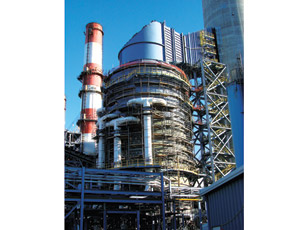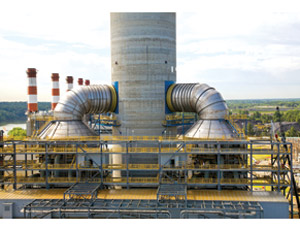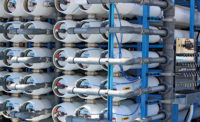Just as much of the country is deeply divided over political issues, a chasm is emerging between supporters of the Environmental Protection Agency’s greenhouse gas regulations and an array of opponents.


Critics say the regulations are an example of overreach by the federal agency, which will both cost jobs and stall major construction projects. Many utilities in the power sector, including Columbus, Ohio-based American Electric Power, say they would have preferred legislative action to regulation.
On the other hand, advocates say that, in the absence of a federal cap-and-trade bill, EPA is simply doing what it is required to do under the Supreme Court’s Massachusetts v. EPA decision in 2007, which mandated that the agency consider whether greenhouse gasses are a danger to public health. The regulations, supporters say, will lead to cleaner air and better health for Americans.
How the scenario will play out remains to be seen, but lawmakers on both sides of the aisle in Congress, as well as several states, are gearing up for a fight.
Rep. Fred Upton (R-Mich.), incoming chair of the House Energy and Commerce Committee, has said that it will be one of his top priorities to stop the EPA from moving forward with greenhouse gas regulations. In the Senate, Jay Rockefeller (D-W.Va.) during the last session of Congress introduced legislation to prevent EPA from working on the regulations for two years, and he says he plans to introduce a similar measure early in the current session.
California Democrat Barbara Boxer, chairman of the Senate Environment and Public Works Committee, says she will oppose any effort to scale back the EPA’s efforts. “When the new Chairman of the Energy and Commerce Committee says EPA cannot pass by regulation what Congress failed to pass by law, let me correct him: Congress passed our Clean Air laws, Republican presidents signed them, and those are the laws that EPA is following,” she recently told reporters.
Scott Segal, an energy analyst with law firm Bracewell & Giuliani’s Washington, D.C., offices, suggests that Republican lawmakers may attempt to attach a measure to halt or delay action on EPA regulation to an omnibus spending bill or another measure that President Obama would be hard pressed not to sign.
On the clock
The first of the regulations—permitting requirements under the Clean Air Act—went into effect Jan. 2. Under the rule, states are required to have plans in place to begin issuing preconstruction permits for the largest sources of greenhouse gas emissions building new facilities or existing facilities making major modifications. In order to obtain a permit, the facility must show that it is using best-available control technologies (BACT) to reduce greenhouse gas emissions.
Although most states met the December 2010 deadline to submit their plans to EPA, a handful didn’t. For those states, EPA stepped in and issued its own federal implementation plans to avoid project delays. “If the state doesn’t have the authority [under the Clean Air Act] from the get-go, then sources would be unable to construct because it needs a pre-construction permit in order for it to do so,” says Bill Becker, executive director of the National Association of Clean Air Agencies.
Texas has refused to abide by EPA’s requirements and has sued to prevent the agency from taking control of the state’s permitting program. On Jan. 12, the U.S. Court of Appeals for the District of Columbia rejected Texas’ motion for a stay. Other states are planning to sue as well, Becker says.
In addition to the state and local permitting requirements, EPA announced in late December that it would propose GHG regulations for powerplants and oil refineries in 2011, with final action in 2012, as a result of two settlements with several states and environmental groups. The regulations will fall under the Clean Air Act’s New Source Performance Standards program, in which EPA sets the pollution level new and existing facilities may emit and leaves it up to industry to come up with the technology to meet the standard, says Gina McCarthy, EPA’s head of the Office of Air and Radiation. Biomass facilities will be exempt from the new rules for three years, according to EPA.
Power-sector upsides
Although many utilities are waiting to see specifics before passing judgment, some are proactively reaching out to the engineering community. There are opportunities for firms in the power sector. “Owners are coming to us and asking for our help in looking at a holistic picture of what their options might be in anticipation” of the new regulations, says Ed Walsh, executive vice president of Overland Park-Kan.-based Black & Veatch’s global energy business.
“We anticipate, at the absolute minimum, assessment of plant efficiency improvements; there’s going to be a review of alternative fuels, and there will be a review of alternative generation—all of which will add to the complex-ity of the overall air permitting process,” Walsh says.
Many utilities see the changes as inevitable, adds Jeffrey Merrifield, senior vice president of Baton Rouge-based Shaw’s Power Group. Some utilities think that “whether it’s by legislation or regulation, the winds seem to be blowing in favor of reducing your carbon footprint,” he says.
David Eppinger, vice president of Irving, Texas-based Fluor Corp.’s power division, sees both opportunities and challenges ahead. The uncertainty that currently exists could prevent some utilities from moving forward with projects, he says.
However, with several other air-related regulations coming down the pipeline in the next two years, including the transport rule, coal-ash disposal and mercury emissions, many utilities have already invested in controls for their larger units. “I think the bigger impact will be on small- to mid-sized plants, particularly coal-fired plants,” he says. Some owners may decide to phase out older, less-efficient units. And “gas is going to become the default generation until this mess is sorted out,” he says.
Becker notes Congress failed to appropriate the millions needed to implement the changes at state and local levels. “Every agency in the country is experiencing budget and staffing problems,” he says.
“States are taking this extremely seriously, because they recognize that if they are unable to meet this challenge, then sources in their community might not be able to get a permit that’s needed for construction.”
| Clean Air Act permitting requirements for GHG emissions for new or major modifications to existing facilities Went into Effect: Jan. 2 |
| New source performance standard for GHG emissions from powerplantsProposal: July 2011Finalized: May 2012 |
| New source performance standard for GHG emissions from oil refineriesProposal: December 2011Finalized Nov. 2012 |
| Source: EPA |



Post a comment to this article
Report Abusive Comment